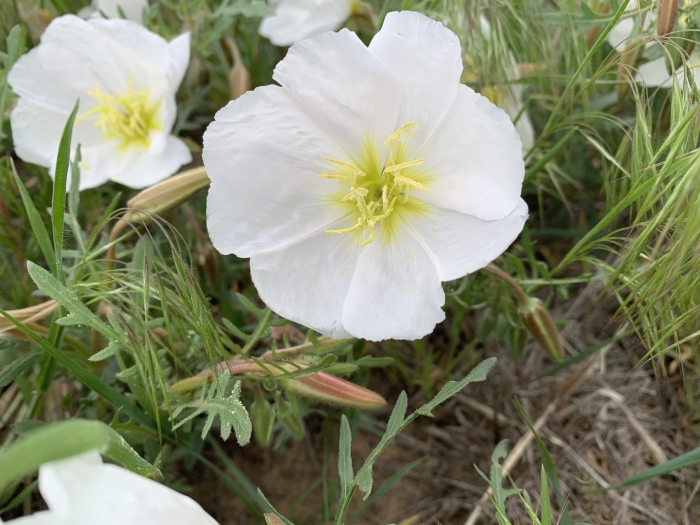Whitest Evening Primrose
(Oenothera albicaulis)
Whitest Evening Primrose (Oenothera albicaulis)
/
/

Kathy Fulton
Public Domain













































Estimated Native Range
Summary
The Whitest Evening Primrose is valued for its drought tolerance and its ability to thrive in poor, well-drained soils, making it an excellent choice for xeriscaping and rock gardens. It is also used in wildflower meadows and as a border plant in dry garden settings. In cultivation, it requires full sun exposure and can tolerate low to medium water conditions, making it a low-maintenance option for gardeners. While it is not commonly affected by diseases, overwatering can lead to root rot. It is also important to note that this plant can self-seed prolifically under ideal conditions, which may be considered invasive in some areas outside its native range.CC BY-SA 4.0
Plant Description
- Plant Type: Herb
- Height: 0.5-1 feet
- Width: 1-2 feet
- Growth Rate: Moderate
- Flower Color: White
- Flowering Season: Spring
- Leaf Retention:
Growth Requirements
- Sun: Full Sun
- Water: Low, Medium
- Drainage: Medium, Fast
Common Uses
Bee Garden, Bird Garden, Butterfly Garden, Deer Resistant, Drought Tolerant, Edible*Disclaimer: Easyscape's listed plant edibility is for informational use. Always verify the safety and proper identification of any plant before consumption., Fragrant, Groundcover, Hummingbird Garden, Low Maintenance, Rabbit Resistant, Showy Flowers
Natural Habitat
Native to arid and semi-arid regions, including prairies, grasslands, and sandy soils
Other Names
Common Names: Prairie Evening-Primrose, White-Stem Evening-Primrose
Scientific Names: , Oenothera albicaulis, Oenothera nuttallii, Anogra albicaulis, Anogra ctenophylla, Anogra leptophylla, Oenothera ctenophylla, Oenothera leptophylla, Oenothera pinnatifida, Anogra douglasiana
GBIF Accepted Name: Oenothera albicaulis Fras.